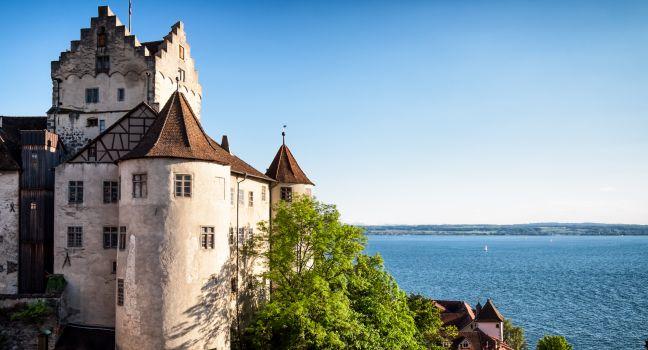Burg Meersburg

Majestically guarding the town is the original “Meersburg” (Sea Castle). It's Germany's oldest inhabited castle, founded in 628 by Dagobert, king of the Franks. The massive central tower, with walls 10 feet thick, is named after him. The bishops of Konstanz used it as a summer residence until 1526, at which point they moved in permanently. They remained until the mid-18th century when they built themselves what they felt to be a more suitable residence—the baroque Neues Schloss. Plans to tear down the Burg Meersburg in the early 19th century were shelved when it was taken over by Baron Joseph von Lassberg, a man much intrigued by the castle's medieval romance. He turned it into a home for like-minded poets and artists, among them the Grimm brothers and his sister-in-law, the poet Annette von Droste-Hülshoff (1797–1848). The Burg Meersburg is still private property, but much of it can be visited, including the richly furnished rooms where Droste-Hülshoff lived and the chamber where she died, as well as the imposing knights' hall, the minstrels' gallery, and the sinister dungeons. The castle museum contains a fascinating collection of weapons and armor, including a rare set of medieval jousting equipment.



